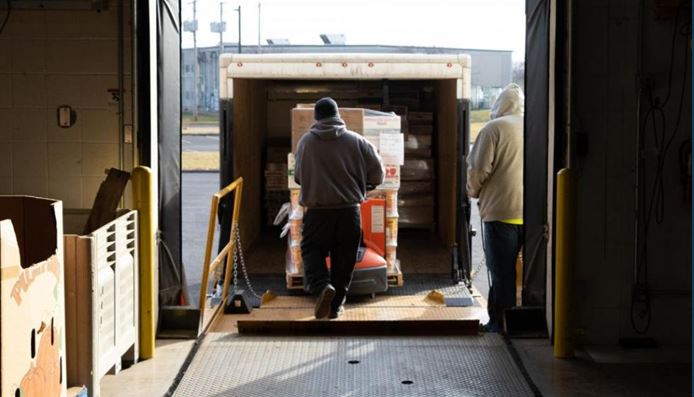
EVANSVILLE, Ind., Feb. 14 (UPI) — America’s food banks are full to bursting with all the meat and produce that normally would be exported to China, but are going unsold because of the trade war.
“We’re getting about twice as much food as we normally get,” said Glenn Roberts, the executive director of the Tri-State Food Bank, which serves Indiana, Illinois and Kentucky. “It’s not just a little more.”
It’s the same story at food banks from Oregon to New York.
The extra food began arriving at late last year. It’s coming from a temporary U.S. Department of Agriculture program that is buying all the food affected by the trade war and distributing it to people in need.
The purpose of the program is to keep the farm economy from collapsing while agricultural trade is sharply reduced between the United States and China.
This situation started in June 2018 when the Trump administration placed tariffs on billions of dollars of Chinese imports. China responded with tariffs of its own, mostly on American agricultural products.
The tariffs sent American food prices plummeting, and left products with nowhere to go.
Under the Trade Mitigation Program, the USDA plans to buy $1.2 billion of that food this year. As of mid-January, it had spent about $210 million.
“It’s really good stuff we’re getting,” said Robin Amarto, the chief development officer for Long Island Cares, a food bank in Hauppauge, N.Y., that was founded by the late singer Harry Chapin. “There’s a lot more variety. It’s going to go a long way toward helping Long Islanders who are in need.”
The USDA already buys food for America’s food banks. But the products they deliver are usually castoffs — food items are difficult to sell on the open market, like powdered milk, dried beans and unpopular cuts of meat.
“Usually, the meat we get is chicken hindquarters,” said Michelle Book, the president and CEO of the Food Bank of Iowa. “When you think about it, most stores and restaurants serve chicken breasts. So there’s not a lot of chicken hindquarters in the marketplace.”
But the tariff foods are different.
About half of the $1.2 billion set aside for tariff relief will go to buy pork, which has been particularly affected by the China tariffs, and is something food banks would otherwise rarely see.
“It is flying out the doors,” Book said. Food pantries “can’t keep it in their freezers.”
The USDA also is buying apples, grapes, potatoes, beef, walnuts and fresh milk — and a long list of other items targeted by tariffs.
“It’s been a real blessing,” Roberts said.
It’s also a challenge, he added. With around double their normal inventory, food banks are struggling to adequately store and distribute the excess.
In some places, like Iowa, food banks have needed to deploy extra man hours to distribute the food. Other places, like the Oregon Food Bank, had to buy additional refrigerators and trucks to handle it, said Laura Recko, a spokeswoman for the that organization.
But, ultimately, the glut might be temporary.
Should normal trading resume between the United States and China, these foods again will be shipped overseas, and food bank inventories will return to normal.
The two countries are negotiating a trade deal, with a March 1 deadline to reach an agreement before a new round of tariffs goes into effect. U.S. Treasury Secretary Steven Mnuchin said in Beijing on Thursday that he was looking forward to the talks as bargaining intensified to de-escalate a tariff war. The talks are to run through Friday.
“It’s a huge short-term gain,” Book said. “But, I would prefer a healthy pork industry and agricultural industry. Iowa has an agricultural economy. When agriculture suffers, the people here suffer, and we end up having to feed more people.”



